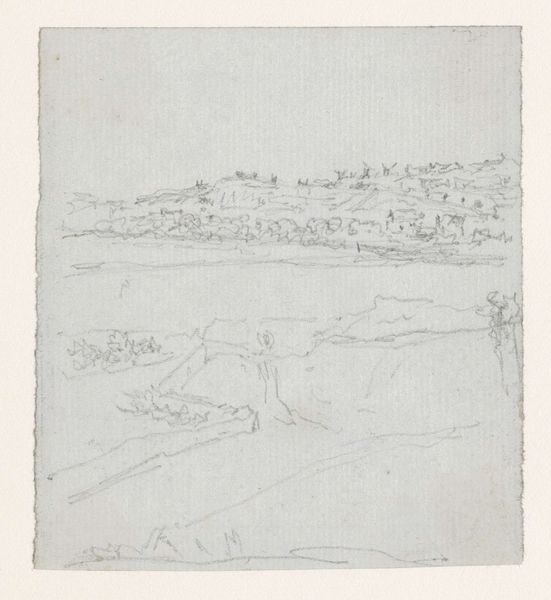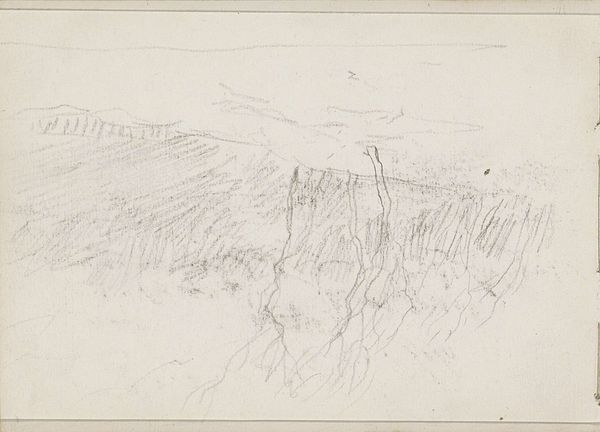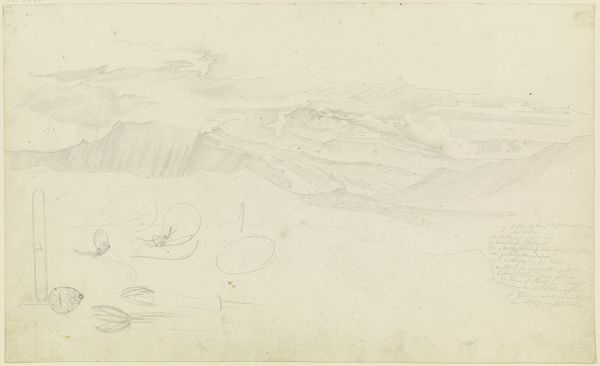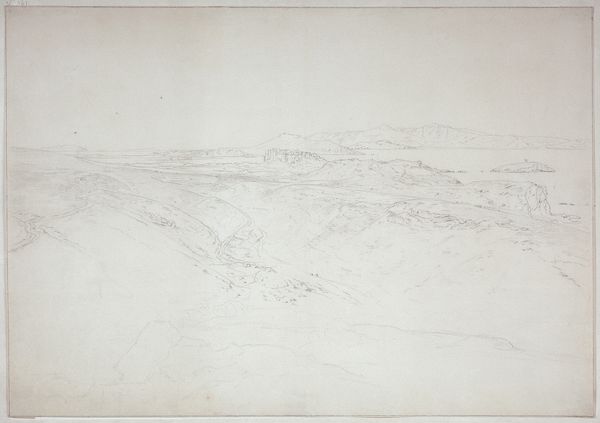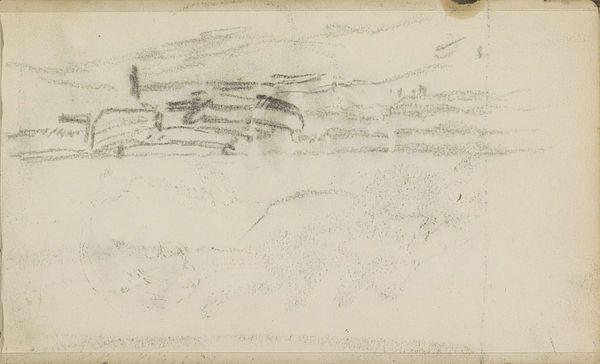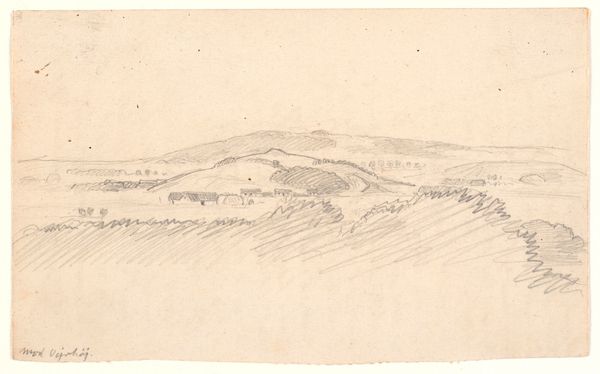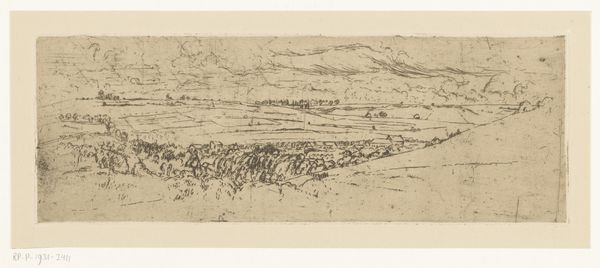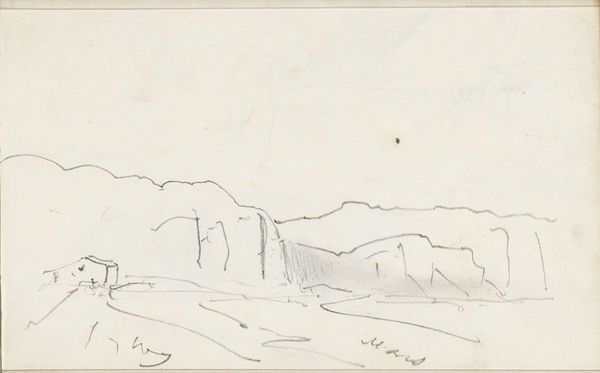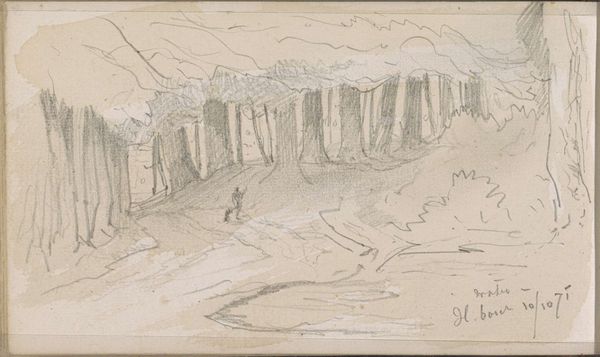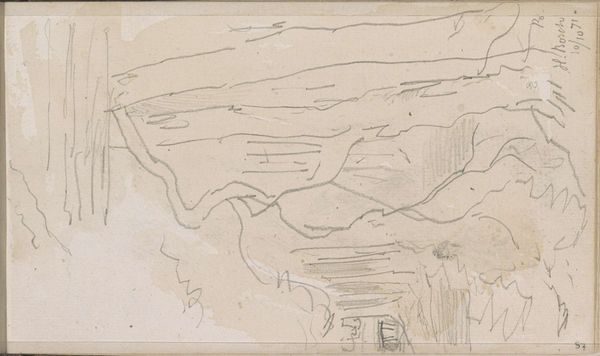
drawing, pencil
#
drawing
#
landscape
#
romanticism
#
pencil
#
realism
Dimensions: 99 mm (height) x 302 mm (width) (bladmaal)
Editor: So, this is *Skrænten og kløften ved Helenes kilde*—"The Slope and the Ravine by Helene's Spring"—a pencil drawing made in 1843 by Johan Thomas Lundbye. There's something almost stark about it, the landscape feels exposed and elemental. What stands out to you? Curator: It’s interesting you mention "elemental." Looking through a materialist lens, I see Lundbye wrestling with the inherent properties of his chosen media. The graphite pencil allows for incredibly subtle gradations of tone, mimicking the erosion and layering evident in the cliff face. He's using an industrial material – graphite mined, processed, and formed – to depict a landscape that has itself been formed through natural processes over immense time scales. Editor: That makes me think about the "labor" involved here. Not just Lundbye’s, painstakingly rendering the textures of the rock, but also the unseen labor that went into producing the paper and pencil themselves. Did these materials influence his artistic choices? Curator: Undoubtedly. The accessibility of paper and pencil allowed artists to produce sketches and studies en plein air, directly responding to the landscape. Lundbye isn’t just capturing a picturesque scene, he’s engaging with the means of representing the Danish landscape at a specific moment in industrial and artistic history. Do you notice how he captures the source so perfectly in the scene? Editor: Yes, I do. His mastery of pencil strokes in that part of the piece draws me in! It is also signed. Was that typical of preparatory sketches? Curator: Often, landscape drawings were sold in studios. With a signature this gains status of art itself, even if we consider the original intention to be an observational preparatory study. These materials are also commercially available and intended for mass consumption which also influenced his art making choices, versus an artisanal process. Editor: That’s a completely different way of looking at it than I initially considered! Curator: Exactly! Analyzing the materiality shifts our focus from solely aesthetic value to questions of production, labor, and even the commodification of landscape. We can learn a great deal.
Comments
No comments
Be the first to comment and join the conversation on the ultimate creative platform.

